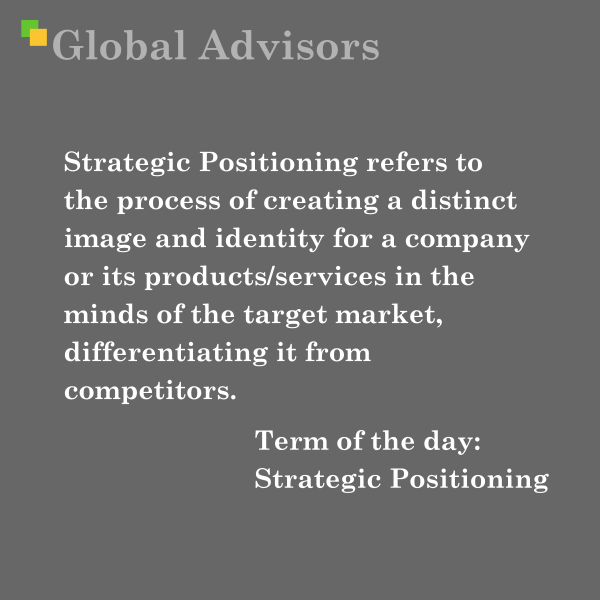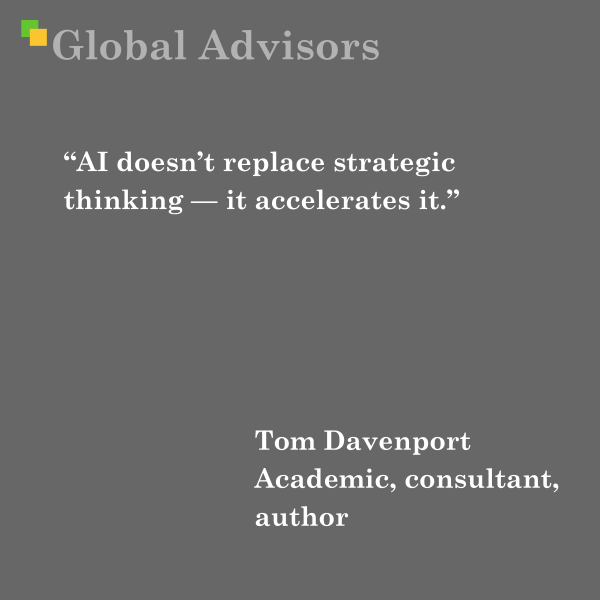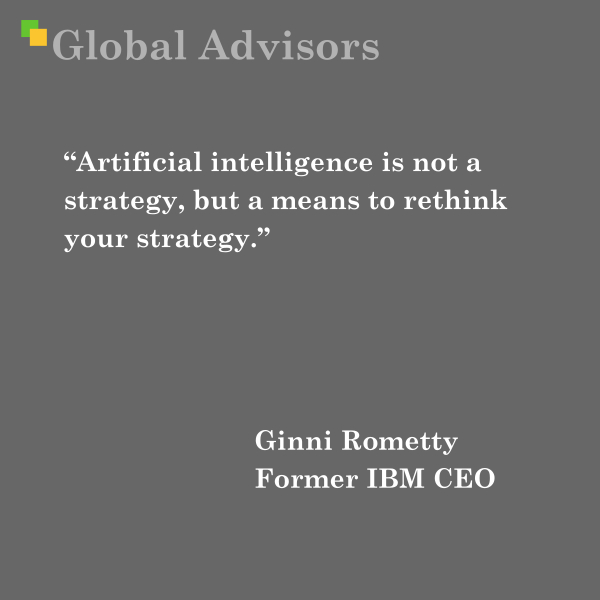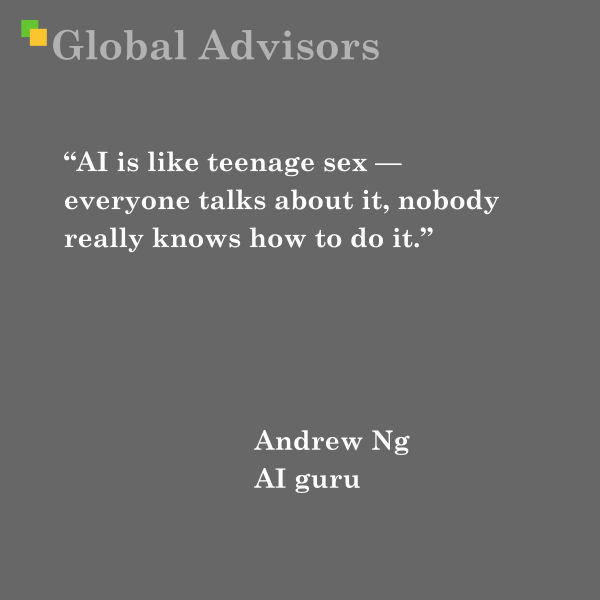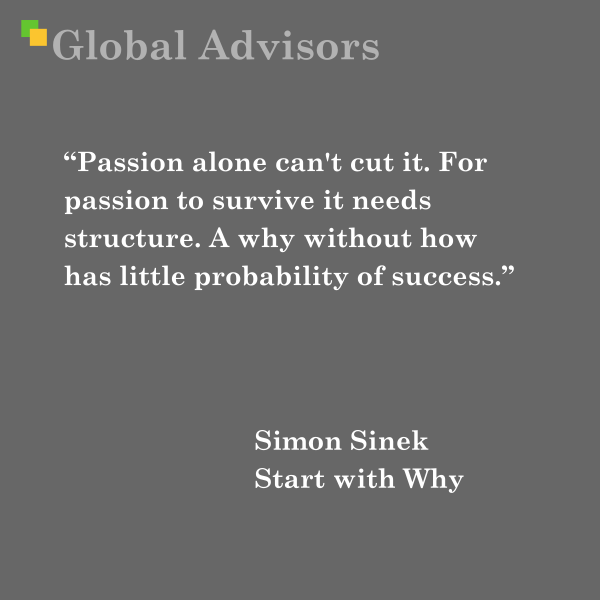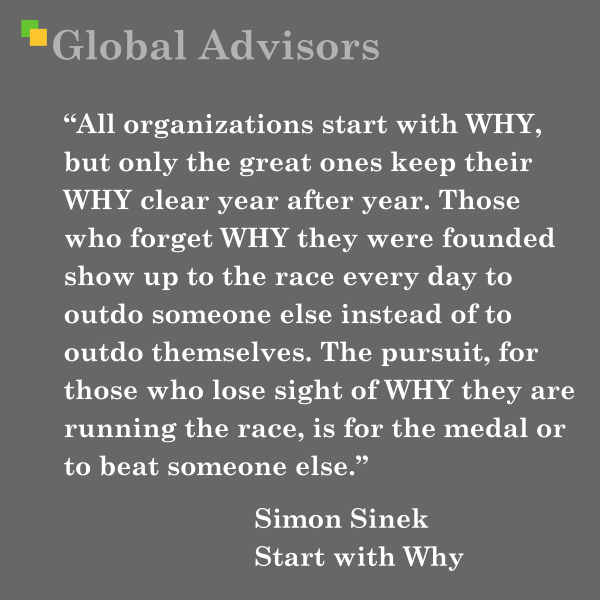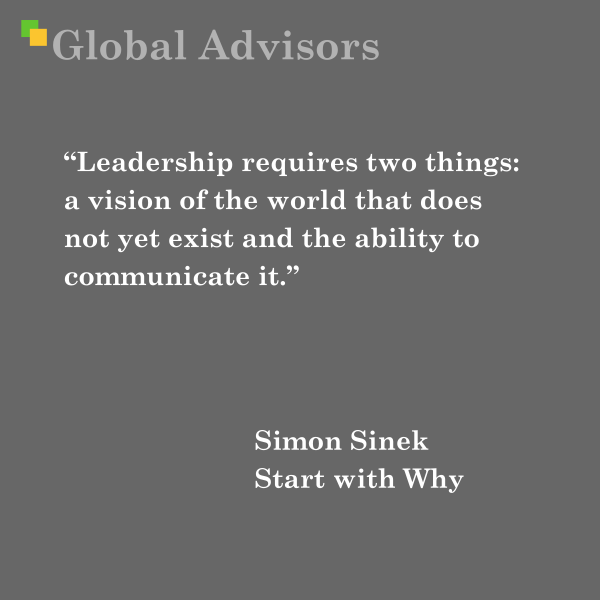| |
|
| |
| |
| |
|
Our selection of the top business news sources on the web. |
| |
| |
| |
Term: Core CompetenceCore Competence refers to a unique set of skills, knowledge, or capabilities that a company possesses, which allows it to deliver unique value to customers and achieve a competitive advantage in the marketplace. This concept was introduced by C.K. Prahalad and Gary Hamel in their seminal 1990 Harvard Business Review article, "The Core Competence of the Corporation." They argued that companies should focus on identifying and nurturing their core competencies to build long-term strategic advantage, rather than just focusing on individual products or markets. Related Theorist: C.K. Prahalad and Gary Hamel In the landscape of business strategy, few ideas have had as lasting an impact as "core competence." This concept, articulated by C.K. Prahalad and Gary Hamel in their influential 1990 Harvard Business Review article, arose from the observation that many companies struggled to achieve sustained growth and innovation despite restructuring and cost-cutting throughout the 1980s. Prahalad and Hamel recognized that the real engine of long-term competitive advantage was not in organizational charts or product portfolios, but in the unique knowledge, skills, and capabilities embedded deep within an organization. They argued that the most successful companies were those able to identify, nurture, and leverage these core competencies—essentially, the things a company could do uniquely well, often difficult for competitors to imitate. Rather than pursuing a broad range of activities or simply reacting to market pressures, companies that focused on their core competencies could create new markets, deliver exceptional customer value, and withstand shifts in the competitive landscape. Prahalad and Hamel's insight placed a premium on the human side of organizations: expertise, collective learning, and collaborative problem-solving became strategic assets. Their work challenged executives to think beyond products and divisions, asking instead what underlying capabilities could be stretched across markets and geographies to fuel growth. For example, a firm known for its supply chain expertise or brand power could use those competencies to move into new industries or create entirely new product categories. Today, the idea of core competence is foundational in both academic strategy literature and practical management. It guides leaders as they assess strengths, build cross-functional teams, and prioritize investments, all in pursuit of sustainable competitive advantage. By understanding and harnessing what they do best, organizations can define their identity, differentiate themselves in crowded markets, and deliver unique value that stands the test of time
|
| |
| |
Term: Strategic PositioningStrategic Positioning refers to the process of creating a distinct image and identity for a company or its products/services in the minds of the target market, differentiating it from competitors. Michael Porter, a leading authority on competitive strategy, introduced this concept as part of his framework for achieving sustainable competitive advantage. Porter emphasized that strategic positioning involves making deliberate choices about which activities to perform and how to configure them to deliver unique value. This can be achieved through cost leadership, differentiation, or focus strategies (as outlined in his "Generic Strategies" model). Related Theorist: Michael Porter In the evolving landscape of business strategy during the late 20th century, companies grappled with the challenge of standing out in increasingly competitive and globalized markets. It was in this context that Michael E. Porter, a Harvard Business School professor, introduced the powerful concept of strategic positioning—a pivotal shift from simply competing to truly differentiating. Porter’s work drew upon microeconomics and industrial organization theory to analyze not just the structure of industries, but also how companies could outperform their rivals by making clear, deliberate choices about the value they create and how they deliver it differently than others. Prior to Porter, much of strategic thinking centered on participating in attractive industries and responding reactively to market pressures. Porter, however, reframed the discussion: firms should proactively define their position by deciding what unique combination of activities they would pursue—and, crucially, what they would not. This insight led to the articulation of the now-classic "Generic Strategies" model: cost leadership, differentiation, and focus. Porter’s research revealed that companies seeking to occupy a strong, defensible competitive position should commit to one of these strategies. Firms that failed to do so—who tried to “straddle” between methods—often found themselves “stuck in the middle,” lacking a clear identity or advantage. His frameworks, such as the Value Chain and the Five Forces, provided analytical tools to guide these strategic choices, moving beyond intuition to systematic, evidence-based decision making. Strategic positioning, as Porter defined it, is more than branding or marketing spin. It is about the underlying choices that shape a firm’s identity in the marketplace: the mix of products, the nature of customer relationships, and the configuration of activities that together create distinct value. Through this lens, competitive advantage is not a product of luck or circumstance, but of intentional differentiation and operational effectiveness. This approach transformed management thinking and remains foundational for firms seeking sustainable success. Strategic positioning continues to inform how organizations choose where to compete and how to win—emphasizing that in a crowded world, clarity of purpose, distinctiveness, and the courage to make trade-offs are the bedrock of lasting advantage
|
| |
| |
Quote: Tom Davenport — Academic, consultant, author“AI doesn’t replace strategic thinking—it accelerates it.” — Tom Davenport — Academic, consultant, authorTom Davenport’s quote captures the essence of the relationship between human judgment and advances in artificial intelligence. Davenport, a leading authority on analytics and business process innovation, has spent decades studying how organizations make decisions and adopt new technologies. As AI systems have rapidly evolved—from early rule-based approaches to today’s powerful generative models—their promise is often misunderstood. Some fear AI might make human thinking obsolete, especially in complex arenas like strategy. Davenport has consistently challenged this notion. He argues that AI’s true value lies in amplifying, not eliminating, the need for rigorous, creative, and forward-looking thought. AI is a tool that enables strategists to test more ideas, analyze larger datasets, and see farther into future possibilities—but it is strategic thinking, shaped by human experience and ambition, that guides AI toward meaningful goals. Davenport’s perspective is grounded in his extensive work with businesses and his scholarship at leading universities. In his conversations and writings, he notes that while AI democratizes access to information and automates routine analysis, a competitive edge still hinges on asking the right questions and crafting distinctive strategies. The leaders who thrive in the AI era are those who learn to harness its speed and breadth, using it to accelerate the cycles of planning, validation, and innovation rather than replace the uniquely human qualities of insight and judgment. About Tom DavenportTom Davenport, born in 1954, is an influential American academic, business consultant, and author. He specializes in analytics, business process innovation, and knowledge management. Davenport is well-known for his pioneering books such as Competing on Analytics and his widely-cited research on how organizations create value from data. Affiliated with prestigious institutions, he has helped shape how leaders think about information, technology, and business transformation. Davenport’s views on AI are informed by years of advising Fortune 500 companies, conducting academic research, and contributing to thought leadership at the intersection of technology and management. His insights have been instrumental in helping organizations adapt to the changing landscape of digital innovation, emphasizing that technology serves best when paired with human creativity, analytical rigor, and strategic vision
|
| |
| |
Quote: Ginni Rometty, Former IBM CEO“Artificial intelligence is not a strategy, but a means to rethink your strategy.” — Ginni Rometty, Former IBM CEOGinni Rometty’s statement, “Artificial intelligence is not a strategy, but a means to rethink your strategy,” emerged from her front-row vantage point in one of the era’s most significant technological transformations. As the first woman to serve as chairman, president, and CEO of IBM, Rometty’s nearly four-decade career at the company offers a compelling backdrop to her insight. Her leadership at IBM began in 2012, at a time when the company confronted industry-wide disruption driven by the rise of cloud computing, big data, and artificial intelligence. Rometty recognized early on that AI—while transformative—was not a plug-and-play solution, but a set of tools that could empower organizations to fundamentally reshape their approaches to competition, operations, and growth. This realization guided IBM’s pivot toward cognitive computing, analytics, and cloud-based solutions during her tenure. A defining episode during Rometty’s leadership was IBM’s acquisition of the open-source powerhouse Red Hat for $34 billion—a strategic move to anchor IBM’s transition into the cloud era and enable clients to rethink how they deliver value in increasingly digital markets. Throughout these changes, Rometty was adamant: adopting technologies like AI is not an end in itself but a catalyst for critically reexamining and reinventing business strategies. The quote distills her conviction that simply acquiring cutting-edge technology is not sufficient. Instead, success depends on leaders’ willingness to challenge old assumptions and design new strategies that fully leverage the potential of AI. Rometty’s perspective, forged by navigating IBM through turbulent shifts, underscores the necessity of using innovation to reimagine, not merely digitize, the future of enterprise. About Ginni RomettyGinni Rometty, born in 1957, joined IBM as a systems engineer in 1981 and steadily advanced through key leadership roles—culminating in her appointment as CEO from 2012 to 2020. During her tenure, she spearheaded bold decisions: negotiating the purchase of PricewaterhouseCoopers’ IT consulting business in 2002, prioritizing investments in cloud, analytics, and cognitive computing, and repositioning IBM for the demands and opportunities of the modern digital landscape. Her leadership style and vision earned her recognition among Bloomberg’s 50 Most Influential People in the World, Fortune’s “50 Most Powerful Women in Business,” and Forbes’ Top 50 Women in Tech. While her tenure included periods of financial challenge and criticism over IBM’s performance, Rometty’s overarching legacy is her focus on transformation—seeing technology as a lever for reinventing strategy, not merely executing it. This context enriches the meaning of her quote, highlighting its origins in both lived experience and hard-won leadership insight.
|
| |
| |
Quote: Andrew Ng, AI guru“In the age of AI, strategy is no longer just about where to play; it’s about how to adapt.” — Andrew Ng, AI guruThis quote from Andrew Ng captures a profound shift in how organizations and leaders must approach strategy in the era of artificial intelligence. Traditionally, strategic planning has focused on identifying the right markets, customers, or products—the “where to play” aspect. However, as AI rapidly transforms industries, Ng argues that the ability to adapt to ongoing technological changes has become just as crucial, if not more so. The background for this perspective stems from Ng's deep involvement in the practical deployment of AI at scale. With advances in machine learning and automation, the competitive landscape is continuously evolving. It is no longer enough to set a single strategic direction; leaders need to develop organizational agility to embrace new technologies and iterate their models, processes, and offerings in response to rapid change. Ng’s message emphasizes that AI is not a static tool, but a disruptive force that requires companies to rethink how they respond to uncertainty and opportunity. This shift from fixed planning to adaptive learning mirrors the very nature of AI systems themselves, which are designed to learn, update, and improve over time. Ng’s insight also reflects his broader view that AI should be used to automate routine tasks, freeing up human talent to focus on creative, strategic, and adaptive functions. As such, the modern strategic imperative is about continually repositioning and reinventing—not just staking out a position and defending it. About Andrew NgAndrew Ng is one of the world’s most influential figures in artificial intelligence and machine learning. Born in 1976, he is a British-American computer scientist and technology entrepreneur. Ng co-founded Google Brain, where he played a pivotal role in advancing deep learning research, and later served as Chief Scientist at Baidu, leading a large AI group. He is also a prominent educator, co-founding Coursera and creating widely popular online courses that have democratized access to AI knowledge for millions worldwide. Ng has consistently advocated for practical, human-centered adoption of AI. He introduced the widely referenced idea that “AI is the new electricity,” underscoring its foundational and transformative impact across industries. He has influenced both startups and established enterprises through initiatives such as Landing AI and the AI Fund, which focus on applying AI to real-world problems and fostering AI entrepreneurship. Andrew Ng is known for his clear communication and balanced perspective on the opportunities and challenges of AI. Recognized globally for his contributions, he has been named among Time magazine’s 100 Most Influential People and continues to shape the trajectory of AI through his research, teaching, and thought leadership. His work encourages businesses and individuals alike to not only adopt AI technologies, but to cultivate the adaptability and critical thinking needed to thrive in an age of constant change.
|
| |
| |
Quote: Daniel Kahneman, Nobel Laureate“AI is great at multitasking: it can misunderstand five tasks at once.” — Daniel Kahneman, Nobel LaureateThis wry observation from Daniel Kahneman highlights the persistent gap between expectation and reality in the deployment of artificial intelligence. As AI systems increasingly promise to perform multiple complex tasks—ranging from analyzing data and interpreting language to making recommendations—there remains a tendency to overestimate their capacity for genuine understanding. Kahneman’s quote playfully underscores how, far from being infallible, AI can compound misunderstandings when juggling several challenges simultaneously. The context for this insight is rooted in Kahneman’s lifelong exploration of the limits of decision-making—first in humans, and, by extension, in the systems designed to emulate or augment human judgment. AI’s appeal often stems from its speed and apparent ability to handle many tasks at once. However, as with human cognition, multitasking can amplify errors if the underlying comprehension is lacking or the input data is ambiguous. Kahneman’s expertise in uncovering the predictable errors and cognitive biases that affect human reasoning makes his skepticism toward AI’s supposed multitasking prowess particularly telling. The remark serves as a reminder to remain critical and measured in evaluating AI’s true capabilities, especially in contexts where precision and nuance are essential. About Daniel KahnemanDaniel Kahneman (1934–2024) was an Israeli-American psychologist whose groundbreaking work revolutionized the understanding of human judgment, decision-making, and the psychology of risk. Awarded the 2002 Nobel Memorial Prize in Economic Sciences, he was recognized “for having integrated insights from psychological research into economic science, especially concerning human judgment and decision-making under uncertainty”. Together with collaborator Amos Tversky, Kahneman identified a series of cognitive heuristics and biases—systematic errors in thinking that affect the way people judge probabilities and make decisions. Their work led to the development of prospect theory, which challenged the traditional economic view that humans are rational actors, and established the foundation of behavioral economics. Kahneman’s research illuminated how individuals routinely overgeneralize from small samples, fall prey to stereotyping, and exhibit overconfidence—even when handling simple probabilities. His influential book, Thinking, Fast and Slow, distilled decades of research into a compelling narrative about how the mind works, the pitfalls of intuition, and the enduring role of error in human reasoning. In his later years, Kahneman continued to comment on the limitations of decision-making processes, increasingly turning his attention to how these limits inform the development and evaluation of artificial intelligence. His characteristic blend of humor and rigor, as exemplified in the quoted observation about AI multitasking, continues to inspire thoughtful scrutiny of technology and its role in society.
|
| |
| |
Quote: Andrew Ng, AI guru“AI is like teenage sex—everyone talks about it, nobody really knows how to do it.” — Andrew Ng, AI guruAndrew Ng, captures the sense of hype, confusion, and uncertainty that has often surrounded artificial intelligence (AI) in recent years. Delivered with humor, it reflects the atmosphere in which AI has become a buzzword: widely discussed in boardrooms, newsrooms, and tech circles, yet rarely understood in its real-world applications or complexities. The backdrop to this quote is the rapid growth in public and corporate interest in AI. From the early days of AI research in the mid-20th century, the field has experienced cycles of intense excitement ("AI springs") and subsequent setbacks ("AI winters"), often fueled by unrealistic expectations and misunderstanding of the technology's actual capabilities. In the last decade, as machine learning and deep learning began to make headlines with breakthroughs in image recognition, natural language processing, and game-playing, many organizations felt pressure to claim they were leveraging AI—regardless of whether they truly understood how to implement it or what it could achieve. Ng's remark wittily punctures the inflated discourse by suggesting that, like teenage sex, the reality of AI is far less straightforward than the bravado implies. It serves as both a caution and an invitation: to move beyond surface-level conversations and focus instead on genuine understanding and effective implementation. About Andrew NgAndrew Ng is one of the most influential figures in artificial intelligence and machine learning. He is known for his clear-eyed optimism and his ability to communicate complex technical ideas in accessible language. Ng co-founded Google Brain, led Baidu’s AI Group, and launched the pioneering online machine learning course on Coursera, which has introduced AI to millions worldwide. Ng frequently emphasizes AI’s transformative potential, famously stating that “AI is the new electricity”—suggesting that, much like electricity revolutionized industries in the past, AI will fundamentally change every sector in the coming decades. Beyond technical achievement, he advocates for practical and responsible adoption of AI, striving to bridge the gap between hype and meaningful progress. His humorous comparison of AI discourse to teenage sex has become a memorable and oft-cited line at technology conferences and in articles. It encapsulates not only the social dynamics at play in emerging technological fields, but also Ng's approachable style and his drive to demystify artificial intelligence for a broader audience
|
| |
| |
Quote: Simon Sinek, Start with Why“Passion alone can't cut it. For passion to survive it needs structure. A why without how has little probability of success.” - Simon Sinek, Start with Why: How Great Leaders Inspire Everyone to Take ActionThe quote captures a critical insight from Sinek’s widely recognized “Golden Circle” framework, which emphasizes that success in organizations and individuals stems not just from knowing their purpose (“Why”), but also from structuring and operationalizing that purpose through actionable strategies (“How”). Sinek observes that many are inspired by passion and a compelling purpose, but passion by itself is fleeting without the discipline and practical systems that bring it to life. In his view, the most impactful leaders and organizations are those that take their “Why”—the core reason they exist or the cause that drives them—and develop clear, consistent “How” principles, which are the values, processes, or actions that sustain that purpose over time. Without “How,” even the strongest convictions can fizzle, as there’s no reliable way to translate vision into tangible results. This insight was shaped by Sinek’s own journey. He experienced firsthand the emptiness that can follow when passion is unmoored from structure. During a period of professional dissatisfaction, Sinek began researching why some leaders and organizations consistently outperformed others—not by relying on charismatic personalities or ambitious goals alone, but by embedding their purpose into the very fabric of everything they did. The realization: passion ignites movement, but it is structure that sustains it for the long term. About Simon SinekSimon Sinek is a British-American author, motivational speaker, and organizational consultant best known for pioneering the importance of “Why”—a concept that has redefined how leaders and organizations approach purpose, vision, and growth. He rose to international prominence following his 2009 TED Talk, “How Great Leaders Inspire Action,” which remains one of the most watched TED Talks. With several bestselling books, including Start with Why, Leaders Eat Last, and The Infinite Game, Sinek explores how clarity of purpose, authentic communication, and principled leadership forge trust and drive sustained success. His ideas and frameworks, like the Golden Circle, are now staples in leadership development across industries, helping organizations move beyond fleeting passion to build enduring, meaningful impact. Sinek’s work is a rallying call: to harness passion, leaders must also build the structures and processes—the “How”—that allow purpose to thrive and endure.
|
| |
| |
Quote: Simon Sinek, Start with Why“All organizations start with WHY, but only the great ones keep their WHY clear year after year. Those who forget WHY they were founded show up to the race every day to outdo someone else instead of to outdo themselves. The pursuit, for those who lose sight of WHY they are running the race, is for the medal or to beat someone else.” ? Simon Sinek, Start with Why: How Great Leaders Inspire Everyone to Take ActionSimon Sinek’s quote captures the central thesis of his influential book, Start with Why: How Great Leaders Inspire Everyone to Take Action. This insight emerged from Sinek’s personal struggle with purpose. After experiencing a profound loss of passion for his own work, Sinek began a personal quest to rediscover meaning. This journey led him to articulate the importance of the “WHY”—the core purpose or belief that drives individuals and organizations. Sinek realized that while many organizations begin with a strong sense of purpose, over time, the clarity of that purpose can fade. As a result, they shift focus from their original mission to external benchmarks, such as outperforming competitors, winning awards, or chasing short-term gains. In Start with Why, Sinek introduces the “Golden Circle” framework: “Why” (purpose), “How” (process), and “What” (product or service). He argues that the truly exceptional organizations are those that consistently keep their “Why” at the forefront of every decision and action. They do not chase external validation, but instead, are driven by a desire to fulfill their founding purpose and to continually surpass their own standards. This approach fosters authenticity, trust, and long-term loyalty among employees and customers alike. The quote is a reminder that losing sight of purpose leads organizations to become reactive, focused more on rivals than on progress. In contrast, staying true to their original “Why” empowers organizations to remain innovative, resilient, and inspiring for years to come. About Simon SinekSimon Sinek is a British-American author, motivational speaker, and organizational consultant known for his pioneering work on leadership and purpose-driven organizations. He gained worldwide prominence with his 2009 TED Talk, “How Great Leaders Inspire Action,” which distilled his “Golden Circle” concept and remains one of the most viewed TED Talks of all time. Sinek’s philosophy centers on the belief that people are inspired not by what organizations do, but by why they do it. His writing emphasizes that leaders should cultivate and communicate a compelling sense of purpose at every level of their organization. Beyond Start with Why, Sinek has authored several bestsellers, including Leaders Eat Last and The Infinite Game, each building on his conviction that inspired organizations create environments where trust, loyalty, and sustainable success flourish. His ideas have had a widespread impact, shaping leadership development in businesses, non-profits, and public sector organizations around the world. Sinek’s message continues to resonate with those seeking to lead with vision, authenticity, and enduring purpose
|
| |
| |
Quote: Simon Sinek, Start with Why“Leadership requires two things: a vision of the world that does not yet exist and the ability to communicate it.” - Simon Sinek, Start with Why: How Great Leaders Inspire Everyone to Take ActionSimon Sinek’s quote—“Leadership requires two things: a vision of the world that does not yet exist and the ability to communicate it”—is deeply rooted in his philosophy of leadership as presented in his bestselling book, Start with Why: How Great Leaders Inspire Everyone to Take Action. The context of this quote revolves around Sinek’s fundamental belief that effective leadership goes far beyond holding authority or managing tasks. Instead, leadership is about envisioning a future that does not yet exist and, crucially, being able to articulate that vision so it inspires others to join in its creation. This idea underpins Sinek’s “Golden Circle” model, introduced in both his book and his widely viewed TED Talk. The model centers on the concept of starting with “Why”—the core belief or purpose that drives an individual or organization—before progressing to “How” they do things and “What” they do. Sinek argues that it is this clarity of vision—the “Why”—and the leader’s skill in communicating it authentically, that transforms followers into believers and teams into movements. Sinek’s insight is a response to the misconception that leadership is about having all the answers or being the most qualified person in the room. He contends that real leadership is the opposite: it’s about empowering others, setting a clear direction, and painting a compelling picture of a future that does not yet exist. When leaders are able to communicate this vision effectively, they can galvanize people to achieve extraordinary things—often beyond what they thought possible. About Simon SinekSimon Sinek is a British-American author, motivational speaker, and organizational consultant, renowned for his pioneering ideas on leadership, vision, and purpose. Born on October 9, 1973, Sinek gained global recognition following his 2009 TED Talk, “How Great Leaders Inspire Action,” which remains among the most-watched TED Talks ever. His approach to leadership is characterized by a strong emphasis on purpose and selfless service, advocating that great leaders “eat last”—putting the needs of their teams before their own. Sinek’s work extends through several influential books, including Leaders Eat Last and The Infinite Game. Across his writing and speaking, he encourages leaders to focus on creating environments of trust, inspiration, and shared purpose, which yield loyal teams and lasting impact. Sinek’s influence is seen in organizations worldwide, from Fortune 500 companies to non-profits, where his ideas about the power of “Why” and vision-driven leadership continue to shape leadership development and organizational culture
|
| |
| |
|
| |
| |


